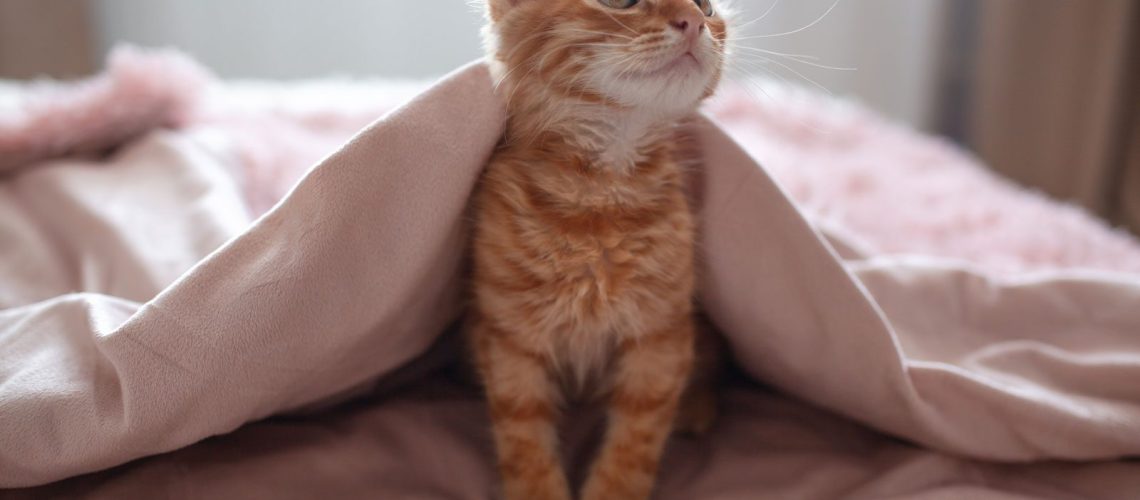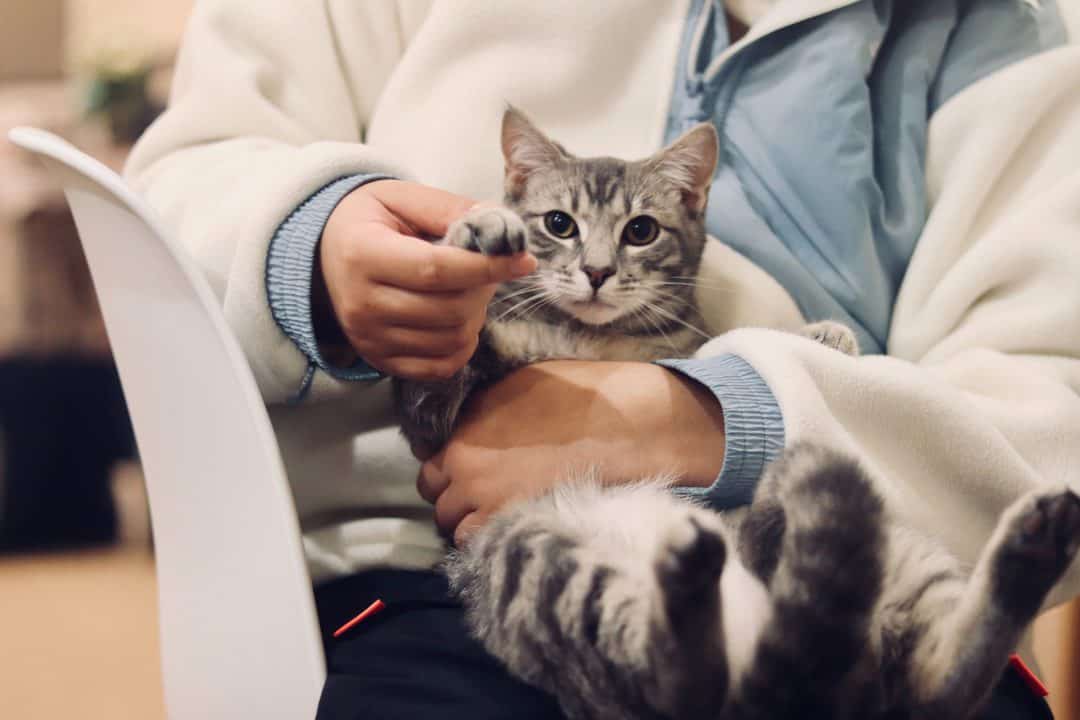Discover the essential responsibilities and costs of owning a pet cat. Learn how to create a safe home environment for your new feline friend.
Key Takeaways:
- Ensure your home is cat-friendly by creating a safe and comfortable environment.
- Provide proper nutrition and a balanced diet to keep your cat healthy and prevent obesity.
- Regularly groom your cat to maintain their coat's health and prevent matting or hairballs.
- Schedule regular veterinary check-ups to monitor your cat's overall well-being and address any potential health issues.
- Establish a consistent routine for feeding, playtime, and litter box maintenance to help your cat feel secure and reduce behavioral problems.
Important things to know before getting a pet cat
Understanding the responsibilities of owning a cat
Before bringing a cat into your home, it's important to understand the responsibilities that come with being a cat owner. Cats require daily care and attention, including feeding, grooming, and playtime. They also need regular veterinary check-ups and vaccinations to stay healthy. Owning a cat is a long-term commitment, as they can live for 15 years or more.
Additionally, cats have their own unique personalities and behaviors. Some cats may be more independent and aloof, while others may be more affectionate and playful. It's essential to choose a cat whose temperament matches your lifestyle and preferences.
Considering the financial implications of owning a cat
Owning a cat comes with financial responsibilities. You'll need to budget for food, litter, toys, grooming supplies, and regular veterinary care. Cats also require annual vaccinations and preventive medications for fleas and ticks. In case of emergencies or unexpected health issues, having pet insurance can provide peace of mind.
It's important to consider these costs before getting a cat to ensure you can provide them with proper care throughout their life. Researching local veterinary clinics and comparing prices for supplies can help you estimate the expenses involved in owning a cat.
Preparing your home for a safe and cozy cat-friendly environment
Cat-proofing your home
Creating a safe environment is crucial when bringing a new cat into your home. Start by removing any toxic plants or substances that could harm your feline friend if ingested. Secure loose electrical cords or wires that may tempt curious cats to chew on them. Keep cleaning products, medications, and other hazardous substances out of reach.
Make sure to close off any small spaces where your cat could get stuck or trapped. This includes blocking access to crawl spaces, vents, or gaps behind furniture. It's also important to secure windows and balconies to prevent falls.
Creating cozy spaces for your cat
Cats love having their own cozy spots where they can retreat and relax. Provide your cat with a comfortable bed or blanket in a quiet corner of the house. Consider getting a scratching post or cat tree for them to climb and stretch their muscles. Cats also enjoy having hiding places, such as cardboard boxes or tunnels, where they can play and feel safe.
Ensure there are multiple litter boxes placed in quiet areas of the house, away from food and water bowls. Cats prefer privacy when using the litter box, so having one per cat plus an extra is recommended.
Essential supplies for your new cat: food, litter box, and toys
Choosing the right cat food
Feeding your cat a balanced diet is essential for their overall health and well-being. Look for high-quality commercial cat food that is specifically formulated for their age (kitten, adult, or senior) and meets their nutritional needs. Avoid feeding them only table scraps or dog food, as these may lack essential nutrients.
It's important to follow the feeding guidelines on the packaging based on your cat's weight and age. Provide fresh water at all times and clean their water bowl regularly.
Selecting a suitable litter box
A litter box is an essential item for every indoor cat. Choose a litter box that is large enough for your cat to comfortably turn around in. There are various types of litter available, including clumping and non-clumping options. Experiment with different litters to find one that your cat prefers.
Regularly scoop the litter box to remove waste and clumps, and completely replace the litter every 1-2 weeks. This helps maintain a clean and odor-free environment for your cat.
Providing engaging toys
Cats are natural hunters and need mental stimulation to stay happy and healthy. Provide them with a variety of toys that mimic prey, such as feather wands or interactive puzzle toys. These toys can help satisfy their hunting instincts and keep them entertained.
Rotate the toys regularly to prevent boredom, and engage in interactive play sessions with your cat using wand toys or laser pointers. This not only provides exercise but also strengthens the bond between you and your feline companion.

Introducing yourself to your new cat and helping them adjust to their new home
Giving your cat time to adjust
When bringing a new cat home, it's important to give them time to adjust to their new surroundings. Start by confining them in a small, quiet room with their essentials - litter box, food, water, and bed - for the first few days. Gradually introduce them to other areas of the house once they feel more comfortable.
Avoid overwhelming your cat with too much attention initially. Allow them to approach you at their own pace, offering treats or gentle pets when they show interest. Building trust takes time, so be patient as your new furry friend gets used to their new home.
Establishing routines
Cats thrive on routine, so establish consistent feeding times and play sessions. This helps them feel secure and reduces anxiety. Set up regular grooming sessions where you gently brush their fur or trim their nails. Cats enjoy these bonding moments when done calmly and patiently.
Provide your cat with vertical spaces, such as shelves or cat trees, where they can observe their environment from a safe vantage point. This gives them a sense of security and helps them feel more at ease in their new home.
Guidelines for feeding your cat and ensuring a healthy diet
Determining the right type of food
Choosing the right type of food for your cat is crucial in ensuring their overall health and well-being. It is recommended to opt for high-quality commercial cat food that is specifically formulated to meet their nutritional needs. Look for options that contain real meat as the primary ingredient, as cats are obligate carnivores and require a protein-rich diet. Avoid foods with excessive fillers or artificial additives.
Feeding schedule and portion control
Establishing a consistent feeding schedule is important to maintain your cat's digestive health. Most adult cats should be fed twice a day, while kittens may require more frequent meals. It is essential to follow the recommended portion sizes provided on the food packaging based on your cat's age, weight, and activity level. Overfeeding can lead to obesity and related health issues, while underfeeding can result in malnutrition.
Hydration and water availability
Cats have low thirst drives compared to other animals, so it's crucial to ensure they have access to fresh water at all times. Consider providing multiple water sources throughout your home, especially if you have multiple cats or live in a multi-story house. Some cats prefer running water, so using a pet fountain can encourage them to drink more.
Tips:
- Gradually transition your cat onto a new diet by mixing small amounts of the new food with their current one over several days.
- Avoid giving your cat table scraps or human food, as certain ingredients can be toxic or harmful to them.
- Consult with your veterinarian for specific dietary recommendations based on your cat's individual needs.
Cleaning your cat's litter box: how often and why it's important
Frequency of cleaning
Regularly cleaning your cat's litter box is essential for their hygiene and overall well-being. It is recommended to scoop the litter box at least once a day, removing any clumps or solid waste. Depending on the number of cats you have and the size of the litter box, you may need to clean it more frequently.
Reasons for cleanliness
Maintaining a clean litter box helps prevent odor buildup, keeps your cat comfortable, and reduces the risk of urinary tract infections or other health issues. Cats are naturally clean animals and may avoid using a dirty litter box, leading to accidents outside the box. Additionally, a dirty litter box can attract pests or bacteria that can be harmful to both your cat and your household.
Tips:
- Use unscented litter as some cats may be sensitive to strong fragrances.
- Consider having one extra litter box per cat in your household.
- Completely change the litter and wash the litter box with mild soap regularly to maintain cleanliness.
Recognizing signs that indicate your cat may be sick or in need of medical attention
Changes in behavior
Cats often hide signs of illness, so it's important to pay attention to any changes in their behavior. If your normally active and playful cat becomes lethargic or withdraws from social interaction, it could be an indication that something is wrong. Other behavioral changes such as excessive vocalization, aggression, or sudden changes in appetite should also raise concerns.
Physical symptoms
Keep an eye out for physical symptoms that might suggest illness. These can include vomiting, diarrhea, coughing, sneezing, excessive scratching or grooming, weight loss or gain without dietary changes, abnormal discharge from eyes or nose, difficulty urinating or defecating, and changes in coat appearance.
Veterinary consultation
If you notice any concerning signs, it is crucial to consult with a veterinarian promptly. They can perform a thorough examination, run necessary tests, and provide appropriate treatment if needed. Early detection and intervention can significantly improve the chances of successful treatment and recovery.
Tips:
- Maintain regular veterinary check-ups to monitor your cat's health.
- Keep a record of any changes in behavior or physical symptoms to provide accurate information to your veterinarian.
- Be proactive in seeking medical attention if you suspect something is wrong with your cat.
Grooming routines for your cat: brushing fur and trimming nails
Brushing your cat's fur
Regular brushing helps keep your cat's coat clean, healthy, and free from mats or tangles. The frequency of brushing depends on the length and type of fur. Long-haired cats may require daily brushing, while short-haired cats can be brushed once or twice a week. Use a brush or comb suitable for your cat's fur type to remove loose hair and prevent excessive shedding.
Trimming your cat's nails
Trimming your cat's nails is important to prevent them from becoming too long or sharp, which can cause discomfort or injury. Use specialized cat nail clippers or human nail clippers with a straight edge. Take care not to cut into the quick, which is the sensitive part containing blood vessels and nerves. If you are unsure about trimming nails yourself, consult a professional groomer or veterinarian.
Tips:
- Introduce grooming gradually, starting with short sessions and providing treats or positive reinforcement.
- Use grooming time as an opportunity for bonding and affection with your cat.
- If your cat resists grooming, consider seeking professional help for guidance.
The importance of bonding and playing with your cat: fun activities to do together
Interactive playtime
Engaging in interactive play with your cat is not only enjoyable but also essential for their physical and mental stimulation. Use toys that mimic prey, such as feather wands or laser pointers, to encourage your cat's natural hunting instincts. Set aside dedicated play sessions each day to ensure they get the exercise and mental enrichment they need.
Bonding through grooming
Grooming can be a bonding experience between you and your cat. Use gentle brushing or combing sessions to create a positive association and strengthen your bond. This also helps build trust and allows you to monitor their coat health.
Creating a stimulating environment
Provide a variety of toys, scratching posts, and climbing structures to keep your cat entertained and engaged. Rotate toys regularly to prevent boredom. Consider puzzle feeders or treat-dispensing toys that provide mental stimulation while satisfying their natural instincts.
Tips:
- Always supervise playtime to ensure the safety of both you and your cat.
- Be mindful of any limitations or preferences your cat may have during play.
- Experiment with different types of toys and activities to find what your cat enjoys the most.
How do I start a bond with my cat?
We strongly suggest giving treats to your cat. Start by offering them in your hand. If your cat shows interest, try placing some treats in your lap. This simple act may be enough to entice your cat to sit on your lap. Another method to initiate contact is to play with a hands-off toy like a laser pointer.
How long does it take a cat to get used to you?
Most cats will adapt within a timeframe of one to two weeks. However, if you have multiple pets in your household, it may take a few months for everyone to fully adjust. For additional tips, please refer to our guidelines on introducing cats to other cats and dogs.
Where should a cat sleep on first night?
When you bring your cat to a new home, it's important to give them their own space for the first night. Make sure they have everything they need, like a comfortable place to sleep such as a cat bed or a box with a jumper or blanket. However, don't be surprised if they decide to sleep in a different spot that they prefer.
Should I leave cat alone first day?
It's important to give your new cat enough time to adapt to their new surroundings. As long as they are eating, drinking, and using their litter box, there is no need to worry. Your new cat should spend at least three days in a designated safe room, although some may require more time.
How long does it take to fully bond with a cat?
Certain kittens form a connection with their caregivers within a few days, while others may require a longer period to feel at ease. It may take several weeks for shy or fearful kittens to bond with you. The most important thing is to remain patient and follow the necessary steps to establish a connection with your kitten, regardless of how much time it may take.
What triggers a cat bond?
CAT bonds can be triggered by three main factors: indemnity, industry loss, and parametric.

















